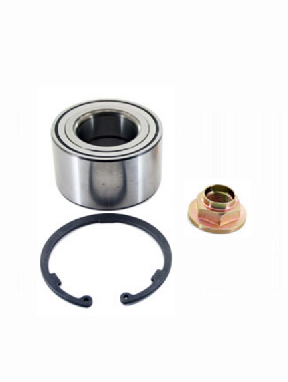

24hours on-line service, factory direct, 100% inspection,MOQ 100pcs. China Non-standard Bearings Suppliers
Add:Shangpu industry zone, Shangyu district, Shaoxing city, Zhejiang
Tel:+8613858544544
Fax:+86-0575-82007172
Mail:2850626308@qq.com
Mail:hengyuebearing@foxmail.com
The so-called cleanliness test is a test method to sepa […]
The so-called cleanliness test is a test method to separate the impurities in the rolling bearing and determine the degree of pollution by certain means. The current cleanliness testing methods include the following three methods: quality method test, microscope counting method test, automatic particle counting method test.
One: quality method test.
According to the relevant standards of JB/T⒛50-2005 stipulated by the state, first clean the impurities in the rolling bearing into the cleaning liquid, and after the cleaning liquid is filtered, dried and weighed, the mass of the impurity particles is calculated.
Two: Microscopic test.
The previous steps of this method are similar to the mass method, the difference is that after the cleaning solution is filtered, the size and quantity of impurity particles in the filter membrane are directly observed with a microscope. Moreover, the chemical composition and content of impurities can be judged according to the shape of impurities. This method is most suitable for the determination of the cleanliness of precision bearings of SKF bearings.
Three: automatic particle counting method test.
The automatic particle calculation method is different from the mass method and the microscope method. It is a method to directly determine the number and size of impurity particles by using the principle of photoelectricity. The accuracy of this method is relatively high, and it is generally suitable for rolling bearings that require high cleanliness.

Bearing burns
The so-called burn damage state of SKF bearing means that the raceway wheel, rolling element and cage of the bearing are rapidly heated during rotation until discoloration, softening, deposition and damage. The main reason for bearing burns is due to poor lubrication of rolling bearings, the use of irregular lubricants, or too much or too little lubricant, which are all incorrect.
There may also be an excessive load (excessive preload). Speed is too high. Clearance is too small. Water or other foreign objects have entered. If the above two situations are not the case, then the accuracy of the shaft and bearing housing is poor, and the deflection of the shaft is large. Seeing this, I think everyone wants to know the solution. First of all, it is necessary to study lubricants and lubrication methods, select the right rolling bearing lubricant and its dosage, and correct the selection of SKF bearings. Investigate fit, bearing clearance and preload, and improve sealing arrangements. Check the accuracy of the shaft and bearing housing.